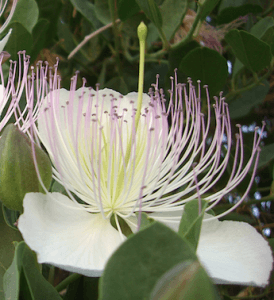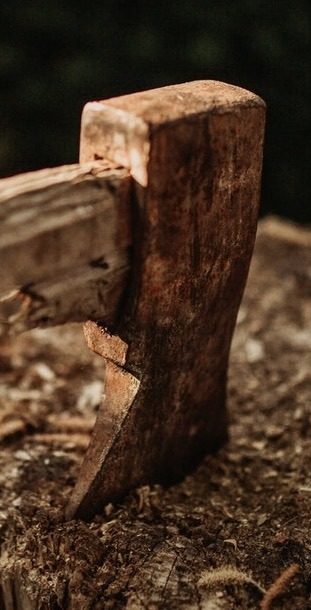(An excerpt from my book, Reading the Bible with Rabbi Jesus )
Jesus’s parables fit perfectly into a non-Western, Jewish culture that expressed itself through tangible metaphors. He was engaging in sophisticated theological teaching, but we miss it if we are looking for the deductive abstract arguments of the Greeks.
Jesus often based his reasoning on experience rather than if-then logic. He did this in multiple ways:
Experience of the Natural World
Jesus frequently used observations about nature and daily life to shed light on spiritual realities. Sometimes he highlighted a lesson by pointing out what was obviously true: grapes don’t grow on thorn bushes. Likewise, people are known by their “fruit.” That seems pretty logical.
 More often, however, Jesus used physical examples that have a surprising illogic about them to shed light on the mysterious ways of God…
More often, however, Jesus used physical examples that have a surprising illogic about them to shed light on the mysterious ways of God…
A speck of a mustard seed can grow into an enormous tree.
A blossom that wilts in a day is more gorgeously adorned than a king’s robe.
Tiny clues from creation give us a glimpse into God’s unfathomable ways. (1)
In contrast, Western reasoning often attempts to systematize theology by reducing and affixing God’s thoughts onto a logical grid, flattening and straightening them so that they fit into predictable patterns.
Jesus’s parables, however, embraced the fact that our material world is multifaceted and complex. If God’s creation surprises and perplexes us, shouldn’t its Creator do so even more?
Experience of Human Behavior
Jesus often used examples based on human experience to explain the complexity of God’s ways. A farmer finds tares growing in his wheat fields. Wouldn’t the logical response be to pull them out?
 Knowing that the valuable wheat crop would be damaged in the process, the farmer instead decides to let the tares grow. In the same way, God allows evildoers to live alongside the righteous.
Knowing that the valuable wheat crop would be damaged in the process, the farmer instead decides to let the tares grow. In the same way, God allows evildoers to live alongside the righteous.
Jesus was doing theology through storytelling. He was addressing a conundrum that has perplexed philosophers down through the ages:
How can a good God let evil seemingly go unchecked?
Jesus’s answer was to share a parallel situation, an experience where a human farmer would make that decision. God knows the wider situation and, for the ultimate good, puts off judgment until the end. What seems illogical at first is not, in God’s greater wisdom.
Experience of the Scriptures
Parables often use imagery from the Scriptures, which recounted the history of Israel’s experience with God. Certain memorable motifs came up over and over again:
kings
wedding banquets
shepherds and sheep
farmers at harvest
All of these are images that appear in Jesus’s parables and in those of other rabbis. Both the plots and the punchlines could allude to scenes in the Bible. If it was true before, it could be true again.
Take, for instance, the fruit tree with an axe at its roots that John the Baptist used in his rebuke in Luke 3. He took this motif from the prophets, who often used trees to represent a nation or its leaders.
God might let them flourish or grow imposingly tall. But in a moment they could be chopped down or consumed in a fire (see Jer. 11:16; 24:1-10, Ezek. 15:6; 17:22; 20:47, 31; Dan. 4:14). Often Israel is the tree, and the image is of God’s judgment of the nation.
 We find a similar tree in one of Jesus’s parables. A man owns an unfruitful tree that he wants to chop down. The gardener, however, buys the tree one more year of life by promising to tend and fertilize it (Luke 13:6–8).
We find a similar tree in one of Jesus’s parables. A man owns an unfruitful tree that he wants to chop down. The gardener, however, buys the tree one more year of life by promising to tend and fertilize it (Luke 13:6–8).
When you compare the two stories, you can see the difference between Jesus’s theological viewpoint and John the Baptist’s. Both are talking about the timing of God’s judgment. Is it right around the corner, or might it be delayed?
John is convinced that the end is close at hand. Jesus disagrees but preaches that now is the time to repent. Both are using metonyms from the Bible to preach eschatology, where “trees” are nations and “axes” are God’s judgment.
What’s interesting is that one place where such “axe” and “tree” imagery is especially prominent is the end of Isaiah 10:
Behold, the Lord God of hosts
will lop the boughs with terrifying power;
the great in height will be hewn down,
and the lofty will be brought low.
He will cut down the thickets of the forest with an axe,
and Lebanon will fall by the Majestic One. (Isa. 10:33–34)
Immediately following this tree-chopping scene is the very important messianic prophecy of the “Branch”:
There shall come forth a shoot from the stump of Jesse,
and a branch from his roots shall bear fruit… (11:1)
If you read these texts all as one, it sounds like the coming of the Messiah is the time of God’s chopping of the trees. This is likely why John and Jesus both used this metaphor. John’s calling was to announce the coming of the messianic King and to reform his people’s conduct in preparation for his arrival. John’s ministry did just that, but he often spoke as if the Messiah himself would bring God’s judgment.
While Jesus affirmed John’s ministry, he challenged this idea, pointing out God’s promises of coming with healing and forgiveness.(2) His parables often focused on God’s mercy toward sinners and preached that judgment would be delayed until the end. For instance, Jesus likened the kingdom to a fishing net that catches both bad fish and good, which will be sorted later (Matt. 13:47–50). He also likened it to a weedy field that a farmer allows to keep growing to preserve the crop (vv. 25–40).
Jesus did sophisticated theology in a very Hebraic way, using concrete, picturesque metaphors to prove his point.
~~~~~
From Reading the Bible with Rabbi Jesus (Baker, 2018), p 96-100. This is from chapter 5, “Greek Brain: Hebrew Brain,” in the section called, “How the Bible Thinks.”
(1) However, note that the Hebrew Scriptures often lurked within parables that appear to be only based on the natural world. For instance, consider Jesus’ parable about the lilies:
Consider the lilies of the field, how they grow: they neither toil nor spin, yet I tell you, even Solomon in all his glory was not arrayed like one of these. But if God so clothes the grass of the field, which today is alive and tomorrow is thrown into the oven, will he not much more clothe you, O you of little faith? (Matt. 6:28-32)
Notice how it recalls Isaiah 40:7-8 and 23-24:
All flesh is grass,
and all its beauty is like the flower of the field.
The grass withers, the flower fades
when the breath of the Lord blows on it;
Surely the people are grass.
The grass withers, the flower fades,
but the word of our God will stand forever…
[He] brings princes to nothing,
and makes the rulers of the earth as emptiness.
Scarcely are they planted, scarcely sown,
scarcely has their stem taken root in the earth,
when he blows on them, and they wither,
and the tempest carries them off like stubble.
Because Jesus lived in a society that was deeply familiar with Scripture, his audience would have found parables that were based in the biblical text especially weighty and persuasive.
(2) For more, see Sitting at the Feet of Rabbi Jesus, 180–96. When John asked Jesus (via a disciple) if he was the one to come, Jesus responded by quoting multiple prophecies about healing and mercy in the messianic age (Matt. 11:2–4). See also Walking in the Dust of Rabbi Jesus, 146–48.
(Image – Kevin Shmid)

Halvor Ronning says
May the LORD continue to inspire you and make you an ever ongoing blessing to many through your truthful and gifted biblical teachings!
Bob Ross says
Your insights and interpretations based on our Jewish Jesus, his language, His culture and His Jewish background are thrilling and a breath of fresh air. Thank you for your commitment to our Lord and your teaching on His life and ministry.
In Christ,
Bob C Ross
Plano TX
Joan says
At the same time I am reading your books, I am reading volume 1 of A BOOK OF JEWISH VALUES. (TELUSHKIN). They are excellent companions.